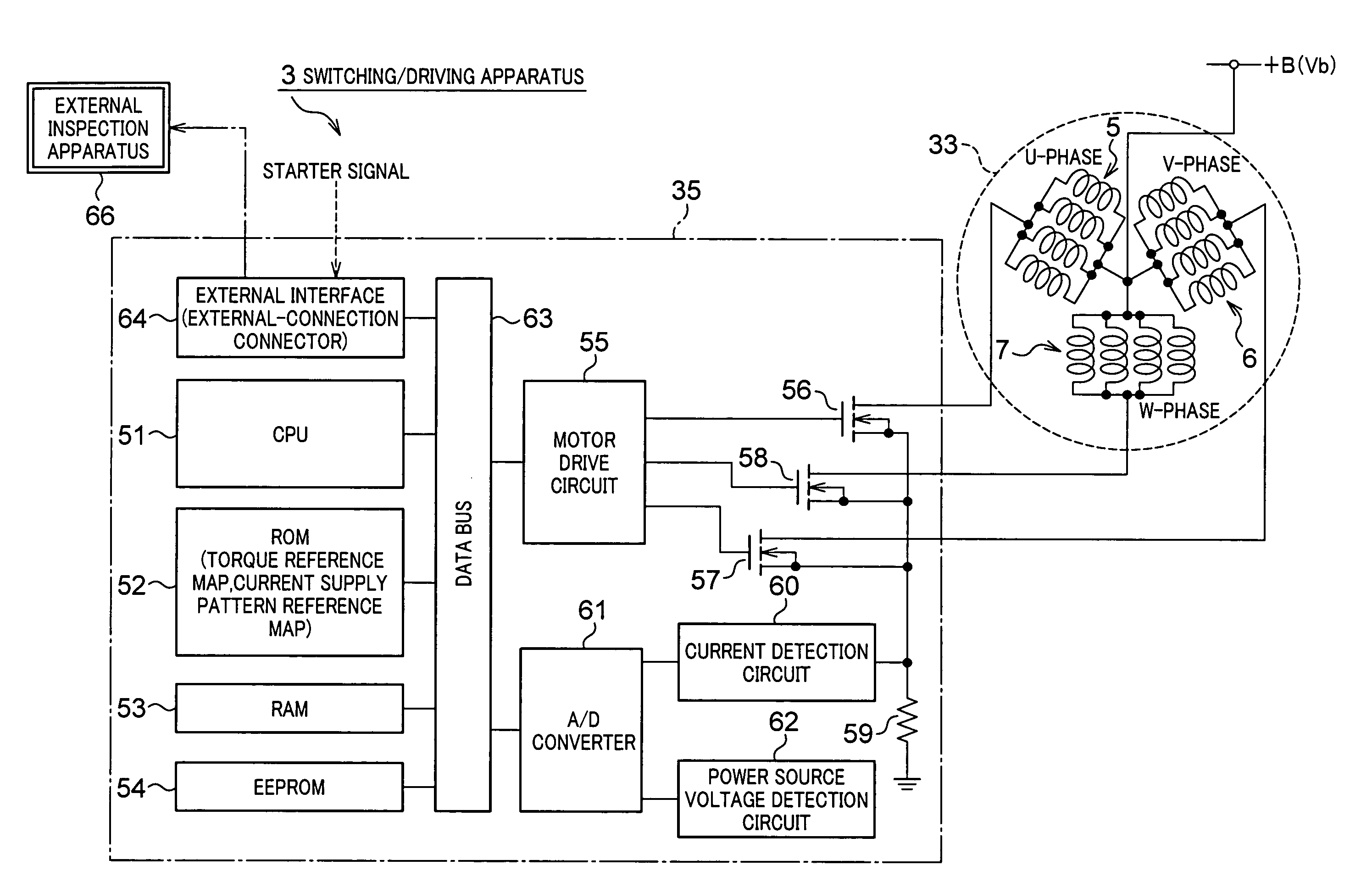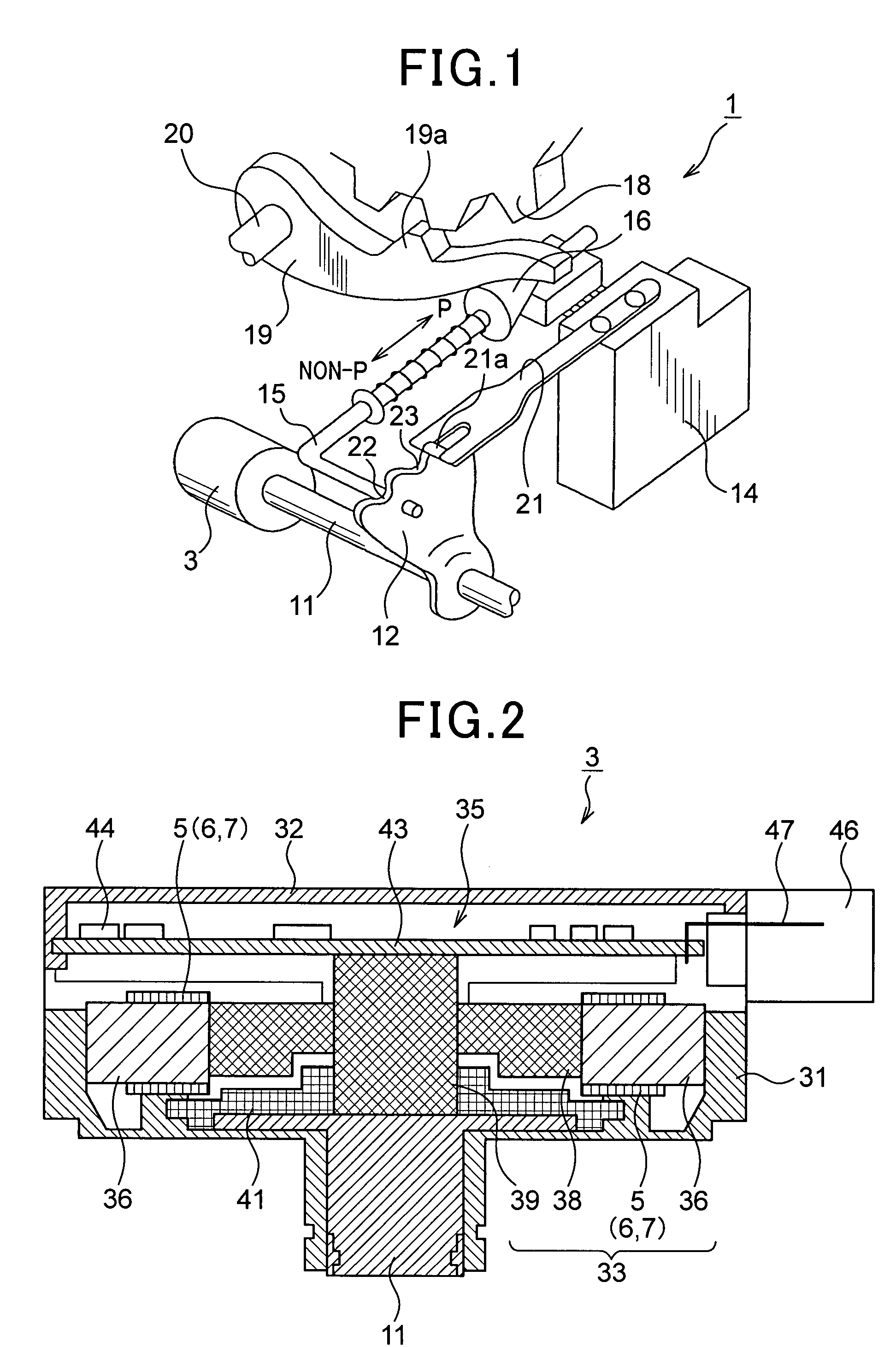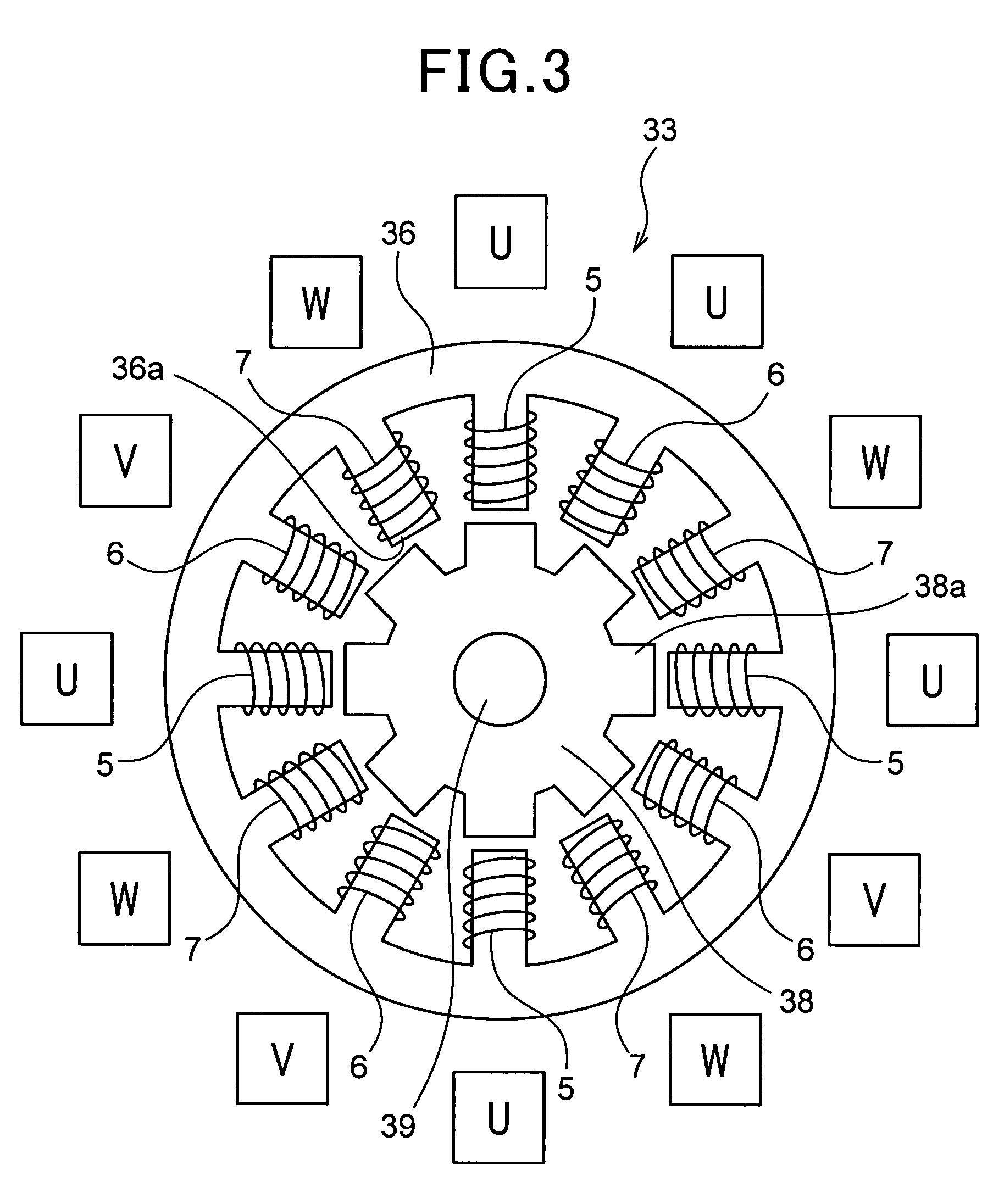Method and apparatus for controlling motor for vehicles
a technology for controlling motors and vehicles, applied in the direction of motor/generator/converter stoppers, dynamo-electric converter control, instruments, etc., can solve the problems of inability to achieve an appropriate torque control, large impedance of motors, and small torque, so as to improve control responsiveness, reduce the accuracy of torque control, and enhance the effect of control responsiveness
- Summary
- Abstract
- Description
- Claims
- Application Information
AI Technical Summary
Benefits of technology
Problems solved by technology
Method used
Image
Examples
Embodiment Construction
[0069]With reference to the accompanying drawings, hereinafter is described an embodiment in which the present invention is applied to a shift range switching mechanism.
[0070]Referring to FIG. 1, an explanation is given first on a configuration of a shift range switching mechanism 1 according the present embodiment. The purpose of the shift range switching mechanism 1 is to switch a shift range in response to a driver's operation of a shift lever, and is provided with a switching / driving apparatus 3 as a drive source. To simplify the explanation, the following description will be focused on a switching operation from a parking range (hereinafter referred to as a “P range”) to other ranges (hereinafter referred to as a “non-P range”), or vice versa, in the entire shift range switching operation.
[0071]A detailed configuration of the switching / driving apparatus 3 (see FIG. 2, for example) will be described later, but to put it briefly, the switching / driving apparatus 3 includes a switc...
PUM
 Login to View More
Login to View More Abstract
Description
Claims
Application Information
 Login to View More
Login to View More - R&D
- Intellectual Property
- Life Sciences
- Materials
- Tech Scout
- Unparalleled Data Quality
- Higher Quality Content
- 60% Fewer Hallucinations
Browse by: Latest US Patents, China's latest patents, Technical Efficacy Thesaurus, Application Domain, Technology Topic, Popular Technical Reports.
© 2025 PatSnap. All rights reserved.Legal|Privacy policy|Modern Slavery Act Transparency Statement|Sitemap|About US| Contact US: help@patsnap.com



